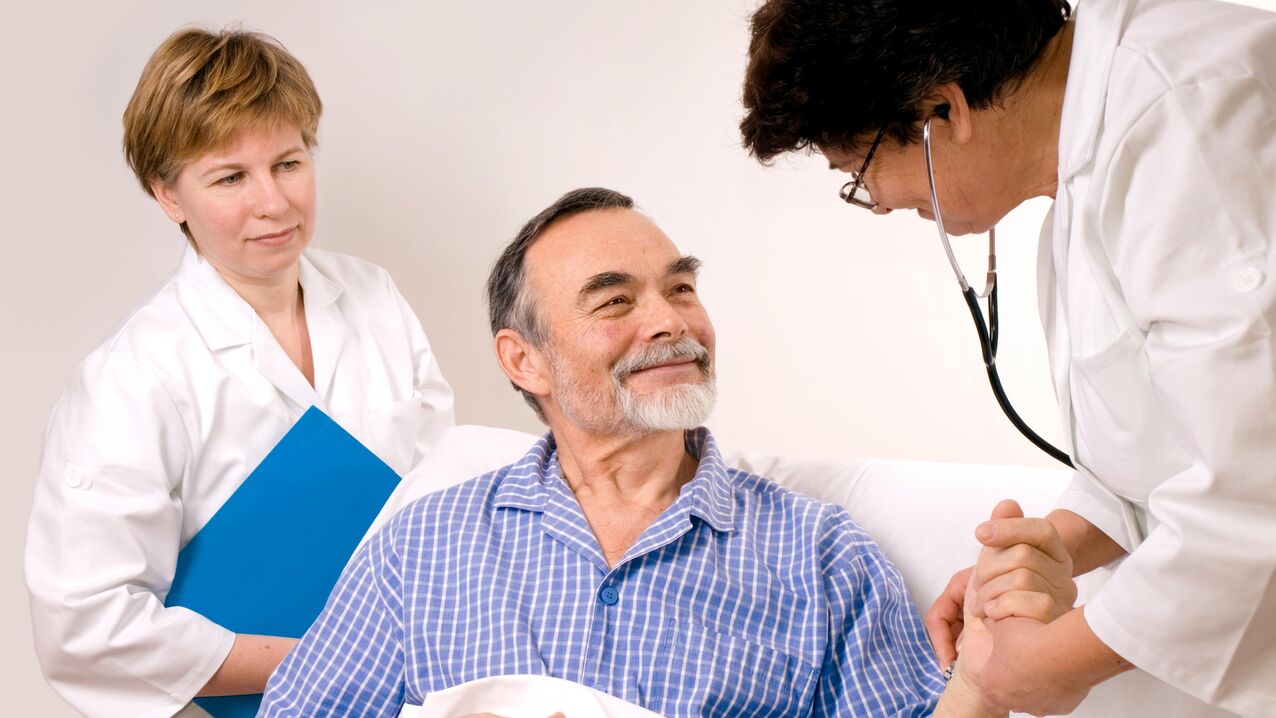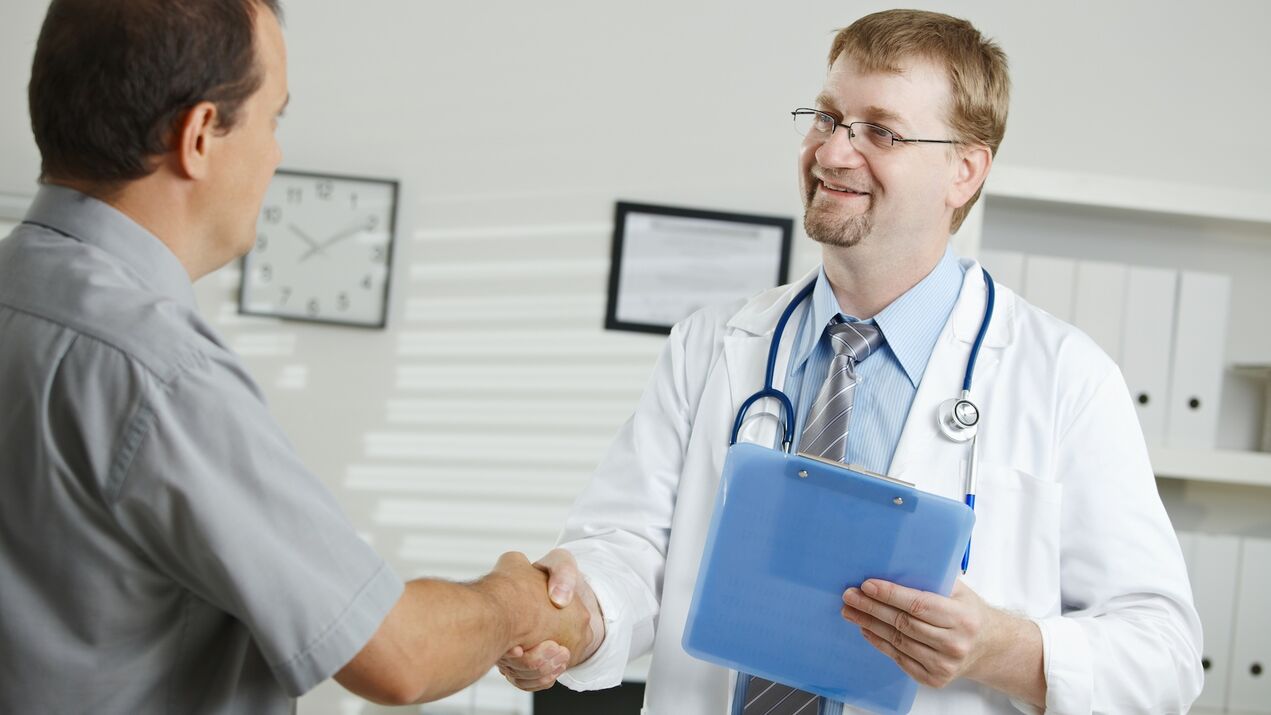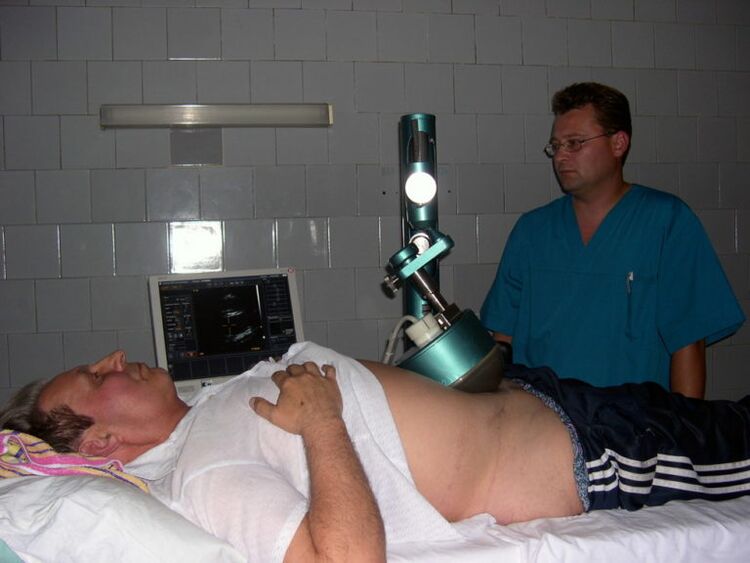Almost all men consider urinary diseases as an annoyance, monotony, and the inability to carry on with their personal lives normally. Many people think about how to treat prostatitis, but not everyone decides to quickly bring this issue to the "public table" and share the news in life even with the doctor.

Before secretly accessing information on the Internet or asking close friends, remember that prostatitis is an isolated disease, and therefore requires careful and delicate treatment. You shouldn't think of such male problems inherently only with gangsters, those with an uncultured lifestyle, or those who have lost their number of "sexual victories".
Several types of infectious prostatitis:
- Bacteria. The reason for the appearance of the infectious type of prostatitis is the positive effect on the body of bacteria: Escherichia coli, staphylococcus aureus, Pseudomonas aeruginosa and streptococcus. These microorganisms can enter the prostate gland directly or from other organs through the blood or lymph.
- Spread. It is caused by the activation of cytomegalovirus, the herpes virus and the human papilloma virus, which can threaten not only the prostate but also other organs.
- Mycoplasma. They are caused by intracellular organisms - mycoplasmas, which also contribute to other inflammations in the genitourinary system.
- Trichomonas. The cause in men is the simplest - Trichomonas.
- Gonorrheal. This type of pathogen - gonorrhea, can also cause prostatitis at any age.
- Chlamydial. In men, this is the most common, caused by an intracellular organism - chlamydia.
- Tuberous. Koch's rods, found in the prostate gland, are often transferred from other organs, which indicates a man has severe tuberculosis.
- Mushroom. This is most likely a non-infectious prostatitis, since it is caused by a person's own microflora - the fungus Candida, which is activated when the general immunity of the body decreases or when antibiotics are not taken. control.
- Mix. There is a failure of the prostate gland by two or more types of infection, but fortunately they are noted infrequently, as it is difficult to completely cure this type of prostatitis.
What does the drug provide?
Prostatitis treatment is the process of eliminating inflammation or blockage in the prostate gland. This is correct, but it should be understood that it is possible to successfully cure it only if the cause that caused its occurrence is eliminated. So how to properly treat prostatitis in men?
For nursing home, outpatient or inpatient clinic treatment, it's best to start with a diagnosis, determining the cause of your male problems. It is necessary to determine by smearing the urethra why the pain in the lower back and lower abdomen started, and whether there is an infection or bacteria in the prostate gland. In cases where there is a bacterial infection, antibiotic therapy is prescribed. Its duration in each case is individual, depending on the extent of damage to the body from the infection.
Prostatitis at age 25 most commonly occurs due to systemic hypothermia. In pursuit of fashion, young men, starting from the transition period, wear "horribly beautiful" things, but not warm (jeans). Therefore, in this case, antibiotic therapy will be required, but not too severe.
Stressors that cause prostatitis should be treated by a neurologist. Usually, electrophoresis, relaxation massage and vitamins are indicated.
Important! If the cause of prostatitis cannot be eliminated, any treatment will not only be ineffective, but also dangerous.
Basic treatment regimen

Prostate disease is quite dangerous, so only a doctor prescribes a course.
What is the most effective way to treat prostatitis? The most commonly used methods are described below:
- Antibacterial drugs. Only effective if prostatitis is infectious.
- Alpha blockers. They act on the smooth muscles of the muscles of the prostate gland, contributing to the rapid recovery of the prostate gland.
- Hormonal agents. They help to quickly eliminate hormonal disorders in the male body.
- Muscle relaxants. Relieves tension in the striated muscles of the prostate gland.
- Plant products. Made on the basis of medicinal plant components, they are used as adjuvants in the treatment of prostatitis.
- Physiotherapy methods.
- Popular folk remedies.
- Surgical intervention. Indicated only when all of the above methods have not worked.
Problem solving method
Laser therapy, or laser prostatitis, is used for subacute and chronic forms of prostate disease. This allows you to strengthen the male body's defenses and heal wounds. Before the procedure, the bladder must be partially filled.
In the chronic form of prostatitis, laser is often used along with medication. It is effective in severe forms of prostatitis that occur without obvious signs. A man may feel an improvement after the first course of a laser procedure.
Indications for the use of lasers:
- congestive and bacterial forms of chronic prostatitis;
- urogenital infections;
- Erectile dysfunction and associated infertility, found to be due to prostatitis;
- neuropathic prostatitis and prostatitis with prostatic hyperplasia;
- urethral constriction.
New in prostate treatment - prostatitis patch (click link for details! ). The urinary patch, made in China according to an ancient recipe, contains extracts of medicinal herbs (safflower dye, cinnamon, Asian tree, moringa, two-tooth gem, Suspicious Corydalis and Bornean Camphor).
This complex has a strong stimulating effect on the prostate gland in both 19-year-old and adult men, increasing blood circulation and reducing inflammation. Its use effectively relieves pain in the scrotum and perineum, prevents the development of edema and improves the process of urination. Of course, non-specific prostatitis cannot be treated with a single patch, but additional antibiotic treatment will be required.
Chinese healers call it "real men's patch" and are sure that this is a home remedy for prostatitis and a real cure in just a few months, because of the therapeutic effect of one patch. Paste lasts at least 3 days. Some experts are a bit skeptical about the claims of their Chinese colleagues and are not committed to answering definitively whether it is possible to completely cure prostatitis with a patch. This question is still open.
Antibiotic therapy for prostatitis
When an infection is detected, doctors will prescribe drugs that are sensitive to certain microorganisms. It should be borne in mind that not all antibiotics can get into the tissues of the prostate gland, which sometimes complicates the healing process.
If the infection is not completely eradicated, the disease may recur.
Groups of antibiotics for the treatment of prostatitis:
- fluoroquinolones;
- macrolite;
- cephalosporins (3rd generation);
- penicillin group;
- tetracyclines.
The course of treatment should last at least 4-8 weeks. Each drug is prescribed only by a doctor and only after examining the patient.
Alpha blockers can be treated when the opening of the sphincter is impaired. Smooth muscle spasms need to be treated quickly to increase the rate of urination and reduce the pressure of urine on the bladder wall. The course of treatment is at least 1. 5-2 months.
Can prostatitis be cured with hormone therapy? In one use - no. They are effective only in combination with other procedures, they contribute to the normalization of hormone levels in the male body, reduce the number of glands in the tissues of the prostate gland, as a result of which inflammation becomesless intense.
Physiotherapy methods

Physical therapy can be a great adjunct in the fight against this disease.
Physical therapy methods that may be used to treat the condition include:
- massage directly onto the prostate gland;
- strengthen (relax) the pelvic muscles;
- acting on myofascial triggers;
- Acupuncture;
- neuromodulatory treatment.
Should we order a leech?
The cure for prostatitis with leech nests today has found a resurgence. To treat prostate disease with hirudotherapy, you will need the knowledge and expertise of your doctor. Do not place leeches on certain areas of inflamed skin and where the skin is too thin, there is a possibility of prolonged bleeding.
The "bloodsucker" is placed into the anus with prostatitis according to the "X" scheme, where the center of the letter is the anus and its ends are leeches. According to another scheme, leeches are mounted on either side of the middle seam of the perineum, back by 2 cm. Usually no more than 4 leeches are attached to a session, the whole course consists of 4-5 days with a mandatory break of approx. a week.
How to treat prostatitis in people
Prostate in men is always a problem, don't think that this is "a disease of the 21st century". How to identify prostatitis has been known since ancient times. All folk methods of treatment can be combined with the main methods, as well as preventive measures for men at a young age. The most common remedies are propolis, parsley, pumpkin seeds and red root.
Surgical intervention
Prostatitis surgery is indicated only when it becomes important. In other cases, the doctor tries to avoid surgical intervention in such a delicate place.
The operation is indicated only in certain cases:
- Urethral obstruction, when there is urethral stricture. At the same time, it is impossible to "go the small way" and the only way out is surgery. In most cases, narrowing of the foreskin causes obstruction, when the glans is difficult to open.
- Drain the prostate gland with its abscess. With the accumulation of pus in the tissues of the prostate gland, it is necessary to remove it from there and rinse the cavity. All manipulations are performed with a special needle.
- The recovery of seminal vesicles when they have lost their function due to inflammation makes it difficult to withdraw secretions from the prostate gland.
- Removal of part or all of the prostate gland. Required for sclerotic changes in the prostate or adenoma. It is indicated only when all methods fail to give satisfactory results.
Do exercise
Prostatitis can be cured with an integrated approach, including the use of simple sports exercises, as it is associated with obstruction. It is necessary to increase the blood supply to the prostate gland and the supply of oxygen to it. To do this, you need to conduct a series of exercises that increase blood flow to the muscles.
Useful:
- take a walk;
- running;
- squat;
- journalism exercises.
The famous birch exercise can be easily done at home several times per day.
Massage

A good outcome in the treatment of the disease is a combination of medication and prostate massage.
A method based on mechanical impact on body tissues by hand or special devices. The essence of the procedure is that the receptors of the skin and muscles sense stimuli and transmit them to the central nervous system. As a result, the tone of the central nervous system increases, and through it, a positive effect is made on the functioning of all physiological systems.
Preventive Measures Treatment
Contraindications for prostatitis must be considered when choosing any treatment.
- In the acute form, prostate secretions cannot be analyzed due to severe pain, and in some men this procedure can be shocking. You should not have any physical therapy procedures (massage, warmth, etc. ).
- It is strictly forbidden to drink alcohol and smoke, as this leads to impaired venous circulation and irritation of the prostate gland. Proper nutrition is key to a healthy prostate, so soft drinks, energy drinks, smoked meats, spicy and fatty foods should be avoided.
- Massage is not performed in case of acute and bacterial prostatitis, with malignant neoplasms in the prostate area, with stones and violations of urination. In addition, massage should not be done when having hemorrhoids, prostatitis, adnexitis, adenomas and some diseases of the urinary system.
- In chronic prostatitis, mud therapy, sunbathing and water procedures cannot be performed, which can lead to overheating or hypothermia.
And finally, an equally important question - where to cure prostatitis? Only in a specialized clinic under medical supervision. Some procedures can be done at home, but they must be agreed to by the attending physician. Remember that a healthy prostate is a man's comfort, a peaceful intimate family life and healthy children.



























